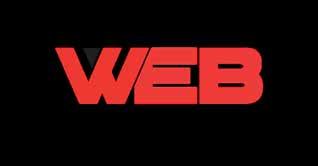
28 minute read
MANKATO
CONSTRUCTION MANAGEMENT GENERAL CONTRACTING DESIGN-BUILD
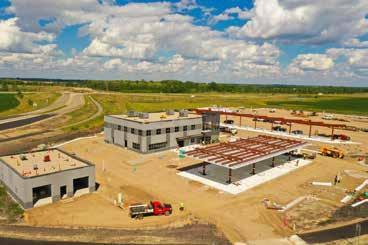
Advertisement
(507) 387-1667
WEBCONMANKATO.COM T R I F E C T A T R U C K S T O P



Visit Mike Kittelson at First Wealth Management for the investment products and services focused on providing the financial solutions to help you get more for your money, so you can get the most out ofof your life.
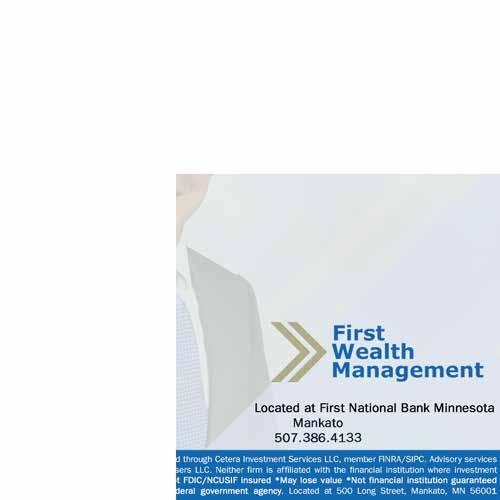

“The thing that has always rung true, no matter the issue or the situation, is let’s do what’s right first, then figure out what happened after. That is true internally, as well as externally,” Roth said. “Because at the end of the day, when we sit down to hash it out with a client, you don’t want them to feel let down. Even if it is an internal conflict, we handle the issue now, then we figure out what happened, how it went sideways and make sure it doesn’t happen again. At Wells, it’s always been a culture of it’s okay to make a mistake, as long as you don’t continue to make that mistake. In the end, we want people to know we care, we didn’t try to downplay the issue, we made it right and moved on. We keep people happy, even if there are financial implications for us.”
Along with its headquarters in Albany, the company still has a plant in Wells, as well as facilities in Rosemount, Minnesota; Denver, Colorado; Valders, Wisconsin; and Crystal Lake, Illinois. Wells designs, manufactures, and installs architectural and structural products for architects, building owners, developers, and contractors from Canada to New Mexico and Indiana to Colorado. Its footprint has been growing steadily for the last decade, primarily through acquisitions — notably Hanson Structural Precast, formerly in Maple Grove; Spancrete in Wisconsin and Illinois; and Rocky Mountain Prestress in Colorado. Enveloping these companies allows Wells to work on projects in the commercial, education, food processing, health care and manufacturing markets. It is also involved in municipal projects, including parking ramps, stadiums and arenas.
“All of the acquisitions we’ve made have been based off of our values. We pay attention to how they want their employees to be treated. That has been the resounding theme with every acquisition,” Roth said. “Through growth and acquisition, we have put ourselves in the position to dominate the markets we are in and continue to be the building solution provider of choice.”
Helping to manage the growth, Wells went through a restructuring earlier this year. It updated its organizational structure to provide strategic strength, while
also allowing for regional independence. Centralized functions of the business, such as finance, human resources, marketing, engineering design and information technology, will be managed by Wells corporate services, while each region of the company and its operations will be led by a divisional president and COO. With the company for almost a decade, Roth was tapped to lead the way in our region. Part of Roth’s charge is to manage the Wells Concrete facility in Wells, an operation the company is making a sizable investment in.
“We are in the midst of investing more than $6 million into the Wells facilities,” Roth said.
The plant at Wells does both architectural and structural precast solutions. Beams, columns and double Ts are the structural components. Insulated wall panels with an architectural finish are the architectural pieces.
“It’s going to be steady investment there from a capital standpoint to get things back to where they should be,” Roth said. “This year it’s the batch plant. Next year will be what we call yard improvements, where we want to transition out of cranes to a Mi-Jack system for the yards.
“Right now, the Wells plant is 70/30 structural building components versus architectural. The investment is focused on facility flexibility. Investing in batch plants and yard operations allows our plant and employees to be able to adapt to changing market conditions, a variety of product offerings and evolving client needs, creating stability and growth opportunities for the community and our local labor force.”
The investment in the Wells plant shows its importance to the ever-growing company.
“Lead times are going further and further out for architectural products. For structural it is really cyclical and is hit or miss. So naturally, we are trying to develop the total precast market so it is more balanced. We can’t really control what the market is going to bear, so that’s really the big reason for the batch plant investment in Wells.”
Right now, the Wells plant employs 200 people. Roth says the investment will likely mean a growth in that number because architectural forms require more work than structural.
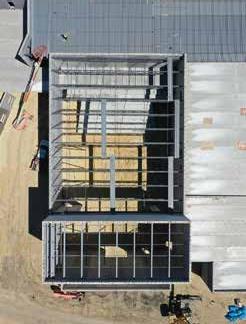
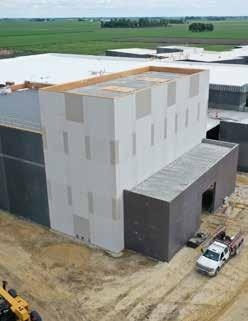
ISG is proud to partner with Wells Concrete on the new PreK-12 Maple River School District building.


Architecture + Engineering + Environmental + Planning | ISGInc.com
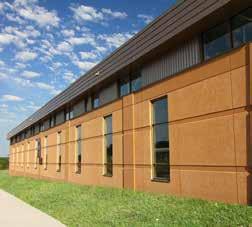
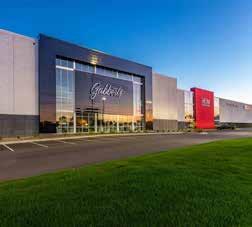
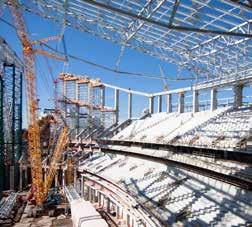
A few examples of Wells Concrete projects: Left, Prior Lake High School Field House; Center, HOM Furniture, Bloomington; Right, US Bank Stadium, Minneapolis.
Meet Greg Roth
Greg Roth was named president and chief operating officer for Wells Midwest in February 2020. As divisional president, Roth has full responsibility and authority for revenue growth, operations and performance of the Midwest division.
Roth has been with the company for 10 years and has had several roles, most recently as vice president of operations responsible for companywide production and yarding operations. He lead the implementation of Concrete Vision, developed many of the metrics used to drive continuous improvement, and has been instrumental in building teamwork between quality and operations to drive performance.
Roth holds a Master of Science degree in executive leadership from St. Cloud State University and an undergraduate degree from the University of Minnesota Morris. His path to Wells Concrete was a little unusual. He remembers meeting Wells CEO Dan Juntunen over happy hour.
“The first time I met Dan it was actually socially. Before I worked at Wells, I was working for a small investment firm in St. Cloud. The whole goal of the firm was to grow the family wealth, so they looked for businesses that were $5 million and under. They would invest capital or talent into the business to help it grow,” Roth said. “So, I did that for an internship then eventually came on board with a company they bought. It was a small $2 million IT services company, and that is where I met Dan’s wife. Through her, I met Dan socially a couple of times and this was just after he became interim president at Wells. So, it was a happy hour, and we were just drinking. He was talking about things he wanted to do at Wells, and it was about centralizing services.”
Roth remembers discussing Juntunen’s ideas and offering a few of his own.
“I gave him advice on three things: I told him one thing that would work, one thing that wouldn’t work and then what I would do differently,” Roth said. “So, six months go by, and I saw him at another happy hour. He said, ‘Admittedly, when I first met you I thought you were a great kid, but what do you really know? But you were three for three.’ At first, I didn’t know what he was talking about. But then he told me the three things I told him turned out just like I said they would!”
It turned out that happy hour conversation made a big impression. Eventually, it led to the start of Roth’s career at Wells.
“This was in 2011. He invited me out to the Albany plant, and I did a tour at 5 in the morning before my workday. When I got back to my office at 7 a.m. I had a job offer waiting for me.”
Roth’s early work focused on finding synergy between independent Wells’ facilities and leveraging that to create more options for Wells’ customers.
“Back when I first started it was just the three plants in Minnesota,” Roth said. “And at the time they were operating as three independent plants. I came in to help leverage the three plants to operate as one, and that was from materials to schedules and standards. It enabled us to offer more, so instead of saying this is what you get when you buy from Wells, we can now say here are the details you can pick from. Because at each plant equipment is different, people are different. We’re trying to leverage the strength of each facility, but still provide flexibility and quality for our customer base.”
His efforts paid off. In 2020, Roth was promoted to his current position: COO of Wells’ Midwest division.
“Say we’ve got a 500-foot structural bed, which will take three architectural forms, so we’ll need three times as many people to make it,” Roth said. “So, the plan is to grow in Wells over the next five years.”
Roth said over the years Wells has been a great city to do business in.
“The community of Wells is very good about whatever we need, always open to helping us out and helping us get to where we want to get to,” Roth said.
While Roth sees great opportunity in the future, he knows there are challenges ahead. They’re the same challenges echoed by others you read about in these pages: labor and supply chain.
“We are always needing more labor,” Roth said. “Whether it’s general labor, carpenters, drivers — if someone wants to be a part of our culture, we’d love to talk to them about what they want to do. We have a lot of employees that grow in the company. They might come in day one as a general laborer, they transition to finishing work, or even go out in the field. It is a company you can grow in, that’s for sure.”
While still a challenge, the supply chain is a little more manageable.
“We’ve done a very good job — and this is where I get to brag up our team a little bit — we’ve done a good job of forecasting material needs, so we haven’t had as many issues with run of the mill stuff like steel, aggregate, things like that that we really need to make the panel. It’s when we start into the custom job stuff, liners and other specialties that make the nice features, that’s where we are kind of at the mercy of the vendor. We’ve had a couple of those where we’ve gotten letters, just like everyone else has, so just be patient. What makes it hard is that we’re kind of in the middle. The customer wants a feature, and they bought it, but we can’t produce their panel without that piece that we can’t get. So, we are definitely feeling the squeeze from both sides,” Roth said. “But that’s nothing out of the norm. Lead times are just a little longer.”
In total, Wells now has 1,400 employees. Its growth is built on the company’s original foundation: making the customer happy.
“We love a challenge,” Roth said. “But at the end of the day, we all work toward one thing: making sure everyone is happy and safe. It’s always been relationship first, business second at Wells. It’s the thought of, if you take care of people, chances are the economics will work itself out.”
THE ESSENTIALS
Wells Concrete Products
835 Highway 109 NE Wells, MN 56097 Phone: (507) 553-3138 Web: wellsconcrete.com


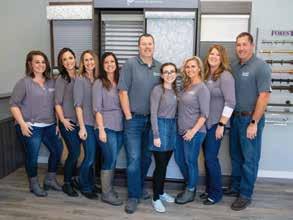
ELEVATING OUR REGION
AS THE WORLD-CLASS FOOD AND AGRIBUSINESS EPICENTER
How are weather extremes impacting your clients and businesses?
At CLA, we work with operations tied to production agriculture. There might be a farmer’s almanac in the back pocket of most clients we connect with year-round. Weather has changed in our region, which has impacted planting, growing, harvest, and planning seasons. The greatest impact we have on businesses is helping them understand their numbers and manage businesses by the numbers. This might include talking about tax credits, tax planning, entity structure, succession, CFO strategy, accounting processes, wealth advisory, or other general conversations as a trusted industry-specific advisor.

Do you see any future trends regarding taxes, regulations, and policy, as they relate to weather?
There are definite trends toward promoting climage change initiatives through tax incentives. At CLA, we’ve seen tax credits related and our region invest in wind, solar, ethanol, and biodiesel for example. There is buzz recently in the carbon credit market, which could be helpful for farmers. Row crop agriculture has a large opportunity here because of its size across country. Producers can look to continue to reduce their carbon footprint as they explore cover crops, no till, and more. Changes in application may benefit their operations and teaming with carbon brokers, they might find buyers for this effort.

Joseph Duda, CPA
Principal, Agribusiness and Cooperatives CLA
What do you see the ag industry doing regarding the weather we’ve been facing in our region?
We are lucky to have some of the best farmland in the country, along with progressive operations to run it. Land and equipment are by no means cheap, so increasing yields on acres and matching it with a right-sized equipment stack makes sense. To face challenges such as the weather, a producer will use all the tools in the toolbelt. From our perspective, it is always important to plan ahead, know your numbers, or get help by reaching out to your team of advisors, such as CLA. As each year has its challenges, working on continous improvement is the standard in the industry. The businesses with that mindset are the ones we see coming out ahead.
THE 38 ANNUAL th

THURSDAY, DECEMBER 2, 2021 4 – 8 PM
Mayo Clinic Health System Event Center, Mankato
SPEAKERS
Heidi Roop, University of Minnesota Extension Specialist Bruce Rastetter, Summit Agricultural Group Nicole Koziolek, Minnesota FFA State Secretary Baleigh Peterson, Minnesota FFA State Sentinel
Legislative Panel greenseam.org/forum21
Riding The Market Roller Coaster
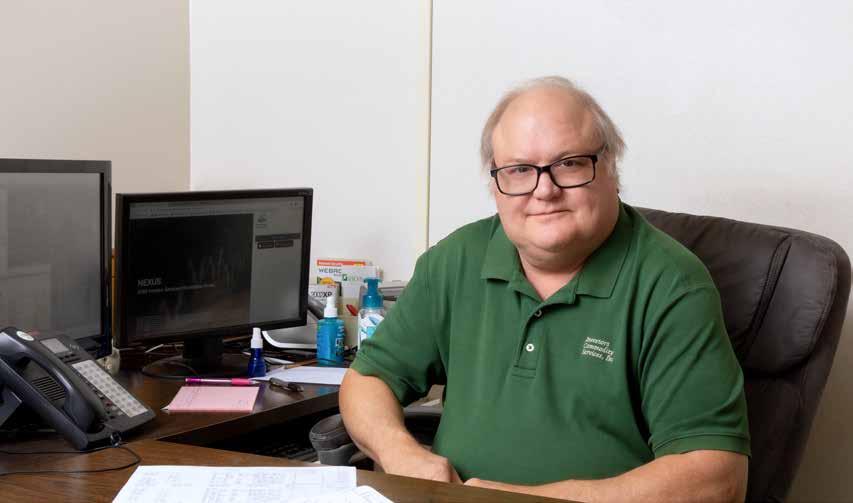
Farmers Manage Risk with Commodity Futures Trading
The Commodity Exchange plays a vital role in the agricultural industry of our region. A global marketplace for the exchange of grains, livestock and other commodities, it allows farmers to manage risk.
Like the stock market, the commodities market took a dive in 2020 due to the impact of the COVID-19 pandemic.
“It was a black swan event, something that absolutely changes things,” Greg Goebel said. “The biggest effect was in the livestock industry due to packing plants losing labor. Some grain exports were also affected because of how COVID affected loading and unloading of ships.”
Goebel is a market analyst at Investors Commodity Services Inc., a full-service brokerage and market advisory company in Mankato. ICS was established in 1982 and is now in its third generation of leadership by the Persson family. Goebel shares his thoughts on the current state of the commodity futures market and its impact on the agricultural sector.
Who are your customers and why do they need you?
Our customers are farmers, businesspeople and investors. We help them establish prices and manage risk. If they are selling commodities, they are hoping we can help time the market. You also look for chances of basis improvement.
Speculators and investors in the market think that the market is going to go up. So, they establish a position based on that. It’s just like investing in any other market. The difference with the futures market is the degree of leverage. In the stock market, I think you can leverage up to 50 percent, whereas in the futures market you are leveraging 75 to 80 percent of it. In this case, you’re putting in roughly 20 percent of the money, but you are responsible for 100 percent of the gain or loss.
The futures market has a substantial amount of risk. People who are in it should either be active hedgers or investors. It’s money that you can lose. But with active hedgers and farmers, it is a great way for them to do their marketing.
How do you help your clients manage risk?
We try to look at both the cash side and the opportunity side of it with them. We also keep track of our customers and keep an eye on who is offering the best bids on grains. Part of it is simply reminding people when things should be done. At certain times of
This section brought to you in partnership with:
year, we will call people up and help them manage the movement of their cash grain and then help lift their futures contract. We are helping them make money and trying to take advantage of market opportunities.
What led you to become a market analyst in the commodities market?
I started in 1993. Prior to that I used the futures market on my own farm in my hog operation. I’ve been on both sides of it. In my first year, I established a price for my hogs, then the market dropped considerably, so I picked up money that way. The following year I ended up having to pay in the futures market, but I also made a whole lot more money because I didn’t have everything hedged. I know exactly how it works.
What is a typical day like for you?
It involves both looking at the market and observing any news that might affect the market. The commodities market can be affected by weather changes, it can be affected by political things happening and it can be affected by crop conditions in other countries. Today in the case of the beef trade, they are reporting BSE, the mad cow disease, in South America. Any little thing can change the market. We also look at what the value of the dollar is doing in different currencies.
Other markets can also affect farm commodities. The commodity that’s moving the most right now is natural gas. There’s higher commercial use of natural gas for production. That affects a number of things, as natural gas is what our nitrogen fertilizers are derived from.
What is the difference between working with a broker to sell your grain on the futures market or working directly with a grain elevator to sell it?
If you work with a grain elevator, that’s called a forward contract. The elevator takes a futures position, and they also figure their basis, which accounts for the transportation and interest costs of carrying a market.
If you do the futures market on your own, you can establish that price but leave where and when you will deliver it wide open. You’re locking in the price and nothing else.
You do need to be prepared for the market to change. In the futures market, whoever is carrying the position is responsible for any change in the market. So, if the market were to go up, whoever was holding that position must put money in on that position. If the market drops, they in effect gain on that.
When does a farmer typically plan their pricing?
You can plan your pricing at almost any time. Typically, especially with corn, sometimes good prices are established while you’re planting it. By making the sale on the futures market, you can lock in the futures and that price.
We’re already looking into years from now. They have futures contracts on corn out into the harvest time period two to three years out. It’s the same thing with soybeans.

Let’s say I’m a farmer and I’ve locked in the price of my grain at $10 a bushel. By the time I harvest my grain, the price of grain has risen to $20. What happens then?
You’re going to always end up with $10 no matter what happens. Now in this case, you’ve got the price you locked in, but somebody else got a good deal. The futures market is a way of establishing a price in the future that works for the individual.
Let’s look at another scenario. What happens if there’s a drought and the farmer can’t produce that crop?
If you have a futures position, you simply lift the position and take the loss. Whereas if you have a forward contract, you will have to buy grain someplace to fulfill that contract. On a longer term outlook, a futures position gives you much more flexibility than forward contracting with the end user or elevator.
I have heard that the market’s been volatile lately. Is that true and what is the cause?
Markets were volatile, but they’re kind of settling down. This year most of the volatility has come from uncertainty about the weather and supply concerns. Rain affects yield and whether a crop is planted on time. It hit the corn and soybean markets worst.
At this point, when the harvest is within a few weeks, the market is not really concerned about supply, whereas two months ago it was. Right now, things are looking good for December 2022. The futures price of corn is about $5, which is normally considered excellent.
Are you seeing any other trends in the commodity futures market?
We’re seeing the markets move much faster than they have in the past. The commodity fund market is affecting other markets more than it has in the past. There are large
Jane Laskey Jane Laskey
EDITOR EDITOR
groups of investors that put all their money together in different commodity funds. So, there is a lot of money there that can help drive a market higher to allow farmers to have better pricing opportunities.
How much does what is happening in other parts of the world impact the prices that farmers here in the GreenSeam are experiencing?
It will affect the underlying price of the futures market because it’s a world trade. When people look at prices in wheat, for instance, they look at what comes out of the Black Sea, what comes out of Australia. We also look at the continent of Africa. They are really expanding their grain production.
Prior to the ‘70s, there really was no South American production. Now we’re seeing increasing production of livestock in South America, and China is attempting to produce more livestock using methods similar to the U.S.
You mentioned that mad cow disease is impacting meat production in some countries. Are there other animal diseases affecting livestock production and the corresponding commodity markets?
China is dealing with African swine fever. One of the biggest fears in the U.S. right now is that African swine fever might come into the U.S. In fact, the closest case of African swine fever is in the Dominican Republic and that is causing some concern that it could end up coming into the U.S.
THE ESSENTIALS Investors Commodity Services, Inc.
600 Reed St. Mankato, MN 56001 Phone: (507) 625-3737 Web: investorsics.com
Convenient, Quality Insurance for Your Business Insurance Needs
Imagine how much easier it would be to handle your business insurance with just one insurer. Federated coverages range from property to liability to IRAs to business life and disability income. That means your Federated marketing representative can help design an insurance plan that takes care of almost every aspect of your business. Just pick up the phone and call. What could be more convenient than that?
Nick Smith Mankato, MN 320.761.9208
Jay Horner
Owatonna, MN 507.455.5200
Stacey Johnson
Owatonna, MN 507.455.5299
Jessica Grayson
Owatonna, MN 507.455.5358
Ed. 3/18 *Not licensed in all states. © 2018 Federated Mutual Insurance Company
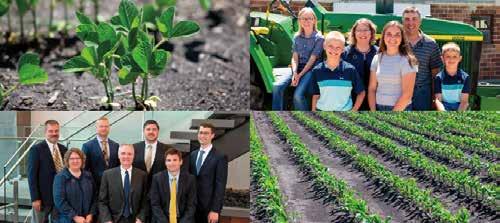

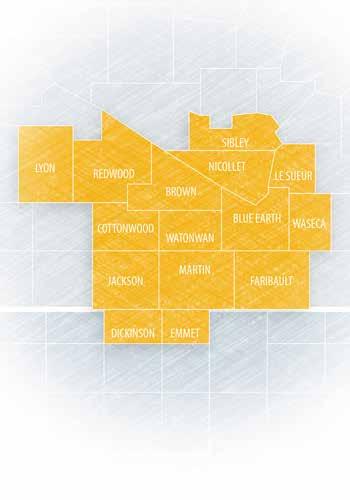


TECHNOLOGY
A seismic shift in transportation is underway in our country.
It’s driven by bad news on the climate change front and fueled by recent advances in the electric vehicle industry. It’s a potent mix that is sure to bring challenges and opportunities to the Minnesota business community.
Some of the impetus for change is coming from state government. In July, Minnesota Gov. Tim Walz signed regulations adopting clean car standards for the state. The new rules will require manufacturers and dealers to supply more zero-emission vehicles, a standard that only electric vehicles currently meet. The standards will only apply to new light- and medium-duty vehicles for sale in Minnesota. It will take effect in 2024, and apply to 2025 models and beyond. The goal is for 20 percent of all passenger vehicles in the state to be electric by 2030.
It’s an ambitious goal: According to the Minnesota Auto Dealers Association, EVs account for only 2 percent of new vehicle sales today. Car dealerships and service centers are scrambling to stay ahead of the changes, and auto manufacturers are racing to meet demand for new EVs and electric crossovers. Expect to see many new models in the new future, including EV SUVs and pickup trucks. By 2023 a combined total of 170 new EV/Crossover models will hit the U.S. market. The federal government is encouraging the purchase of these vehicles for residential use with up to $7,500 tax credits.
Minnesota is building the infrastructure needed to support the influx of EVs. Our state currently has more than 200 charging stations in its network, which span the state from border to border, north, south, east and west. According to chargehub.com, there are EV charging stations in almost every city in our area. Mankato alone has 19 public charging stations. For an eye-opening glimpse at Minnesota’s EV charging station network, check out plugshare.com or chargehub.com.
The number of charging stations is sure to increase quickly. The

Minnesota Pollution Control Agency is in the process of installing charging stations every 30 to 70 miles along seven major transportation corridors. I’m writing this story in September and the $1.2 trillion infrastructure bill that passed in the Senate is still awaiting approval from the House of Representatives. It is predicted to pass and by the time you read this it may have become law. If approved, Minnesota will receive $68 million over the next five years to further expand its EV charging station network.
It seems clear EVs are here to stay. That’s good news for the planet. Could it also be good news for your business?
Many questions still need to be answered as our state pivots to an emissions neutral approach to transportation. Has the EV industry finally reached that magic combination of affordability, availability and feasibility that will spur popular demand? Will EV charging stations start popping up in company parking lots to meet employee and customer demands? Could embracing EV be a differentiating factor for some businesses? (Savvy hotels and restaurants are betting that it will!) Finally, can Minnesota harness the opportunities EVs present without damaging other key industries? In a region that is directly impacted by the ethanol industry, this will be a very pressing question indeed.
Like it or not, change is on its way. As always, prudent business leaders will be watching this evolution closely while assessing the challenges and opportunities it creates for their companies.
Jane Laskey
EDITOR
INSPIRED TO PLAN AHEAD

ARE YOU READY TO START PLANNING YOUR RETIREMENT?
It’s never too early nor too late to prepare for your retirement. Finding the right time to retire comes down to proper planning.
At Eide Bailly, we help clients effectively manage their family’s unique financial situation. With our comprehensive financial planning approach, we can customize solutions and strategies to help you plan for the future. Our financial services combine the knowledge of a Certified Financial Planner with an experienced team of CPAs and business advisors to help you prepare for retirement, manage your taxes and plan your estate. Let us help you find the right time to retire!
By: Ryan Spaude, CFP®
Ryan Spaude has more than 25 years of experience as a Certified Financial Planner and enjoys helping his clients create a plan for their future.
507.304.6926 | rspaude@eidebailly.com
EMPLOYMENT
Despite lingering pandemic effects, Minnesota businesses are surging back to life.
The onset of COVID-19 during the spring of 2020 was truly a dark time for our state. How bad? According to the Minnesota Department of Employment and Economic Development, during March and April 2020, 410,736 jobs were lost and 10,492 businesses closed. To put this in perspective, this dramatic decline was worse than the Great Recession of 2008 (127,319 jobs lost) and the previous recession of 2001 (35,615 jobs lost) combined. And it occurred over just a few short months. No wonder our heads were spinning! Although the business sector stumbled in those early pandemic months, it has been making rapid strides toward recovery. The Minnesota secretary of state’s office reports new business filings were up in 2020 at 80,072 compared to 72,716 in 2019. In addition, 2021 is on track to meet or exceed both years, with 64,256 new business filings as of August 2021. That’s almost 19 percent higher than the same period in 2020 and 24 percent higher than the same period in 2019.
In other good news, exports are up. DEED reports Minnesota’s second-quarter exports for 2021 were 29 percent higher than last year. They’re even 5 percent higher than the same period in 2019, before the pandemic reared its ugly head.
There is funding available from the state of Minnesota for businesses that still need a little help getting back on their feet. The Minnesota Legislature renewed its commitment to the Launch Minnesota Innovation Grants program, setting aside $1.5 million to spur new technology in 2022 and 2023. The Minnesota Emerging Entrepreneur Loan Program awarded $3.1 million this year to support the growth of businesses owned and operated by minorities, low-income people, women, veterans and people with disabilities. The state also dedicates $5 million to the Angel Tax Credit. It’s designed to stimulate private investment in emerging businesses. Finally, there are billions of dollars in federal infrastructure spending on the way to Minnesota soon.
Nothing will erase the difficulties of 2020. Many of the businesses that shut their doors may never be back — and they will be missed. Those that remain open are struggling with supply chain issues and staffing shortages. Still, there is cause for optimism. The entrepreneurial spirit is alive and well in our state.
Happy Holidays
Corporate Graphics

Your Printing Solutions Company 1750 Northway Drive • North Mankato, MN 56003 • 800-729-7575 • www.corpgraph.com
Share in the spirit of holiday get-togethers with ne food, drink, and camaraderie.

Green Mill Restaurant & Bar
2101 S Broadway Street New Ulm, MN 56073 507-359-5300 • greenmill.com DETAILS: Full bar with seating up to 69. Restaurant seating up to 110, and 3,500 square feet of meeting space. Conference Center attached for meetings and social events. FOOD: Pasta, Pizza, Burgers, Sandwiches, and Salads.

Lamplighter Family Sports Bar & Grill
214 N Minnesota Street New Ulm, MN 56073 507-354-2185 • lamplighternewulm.com DINING: Big burgers, beer and sports, the ultimate tri-fecta! FOOD: Burgers made of lean ground beef, zero transfat cooking oil used, and only the freshest produce chosen. Sauces, soups, chili and dips all made from scratch.
Wow! Zone
2030 Adams Street Mankato, MN, 56001 507-625-2695 • wowzonefec.com DETAILS: 24 bowling lanes, 2 level laser tag, black light mini golf, arcade, sports bar/restaurant. Family fun or happy hour with coworkers. FOOD: Burgers, sandwiches, wings, pizza, salads and pasta.
Veigel’s Kaiserhoff
221 N Minnesota Street New Ulm, MN 56073 507-359-2071 • kaiserhoff.org DETAILS: Large parties, tour groups and sports teams welcome. Full bar. FOOD:“Home of the famous Kaiserhoff Barbeque Ribs.” German menu. Steaks, Seafood, Burgers, Sandwiches and Salads.
Neisen’s Riverside Sports Bar
34166 MN-99 St Peter, MN 56082 507-931-7966 DETAILS: 24 draft beer choices, as well as many other bottled options. 19 big screen TVs for all your sporting events, huge rooms for special or private events. FOOD: Large menu of appetizers, burgers, sandwiches, wings, pizza, salads and more.
Swiss & Madison
920 Madison Avenue Mankato, MN, 56001 507-380-7556 DETAILS: Fine dining. NEW family-owned restaurant with a modern menu and atmosphere. Come enjoy any meal and occasion with us. FOOD: Appetizers, salads, entrees with steak, walleye, shrimp, scallops, salmon.
George’s Fine Steaks & Spirits
301 N Minnesota St New Ulm, MN 56073 507-354-7440 georgessteaks.biz DETAILS: Private parties anytime; private room available. Fine dining, full bar. FOOD: “World Famous” Prime Rib, fresh hand-cut steaks, fresh fish, homemade salad dressing, soups and sauces.
The Lakes Sports Bar & Grill
151 Humphrey St W Lake Crystal, MN 56055 507-726-6801 FOOD: Delicious homemade pizza, wings, burgers, sandwiches and salads. Daily specials and homemade soup. DETAILS: Private room with seating up to 200 and private bar area. We can also cater your next special event.
The Blue Boat
12 Civic Center Plaza Suite 1710 Mankato, MN 56001 507-720-0462 blueboat.earth DETAILS: A dining experience meant to take your tastebuds on a tour of the world. Local artists and musicians featured. FOOD: Ever-changing menu based on featured zones around the world.





